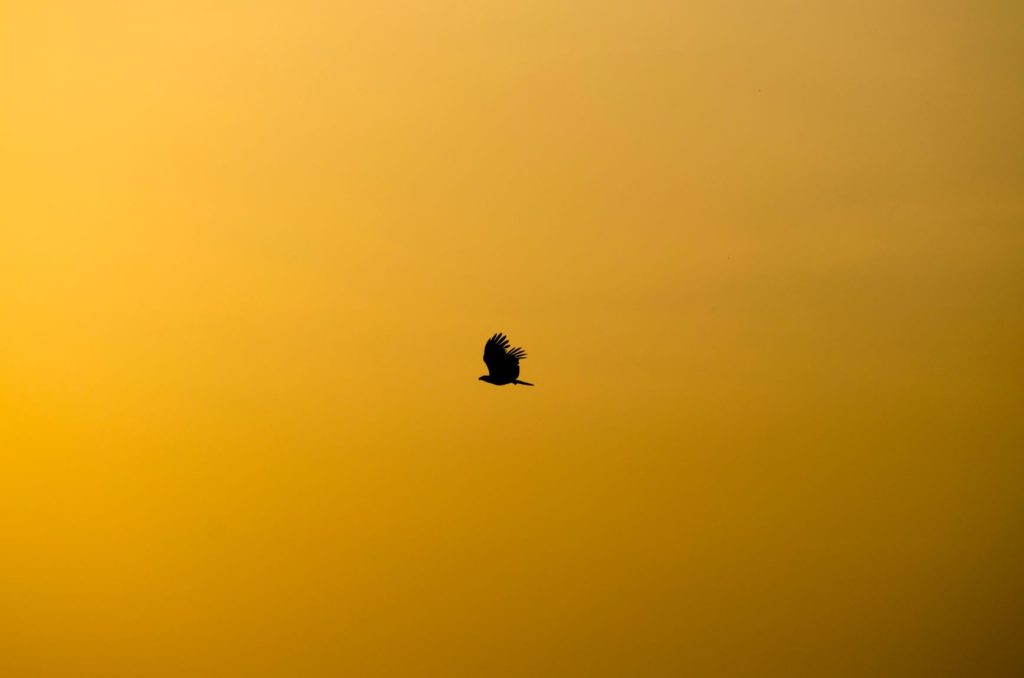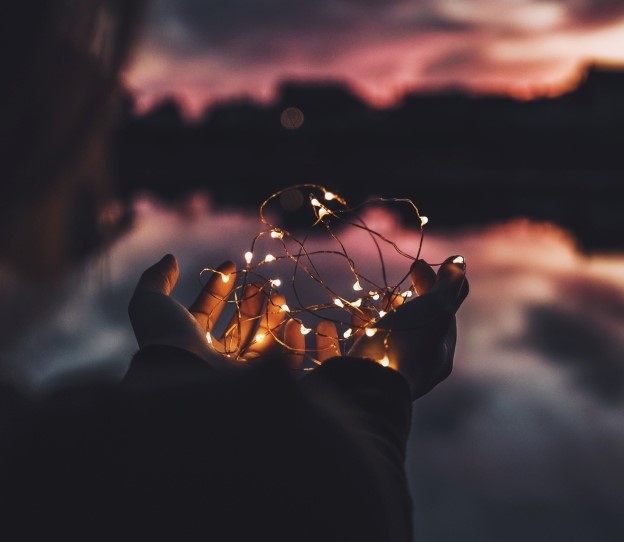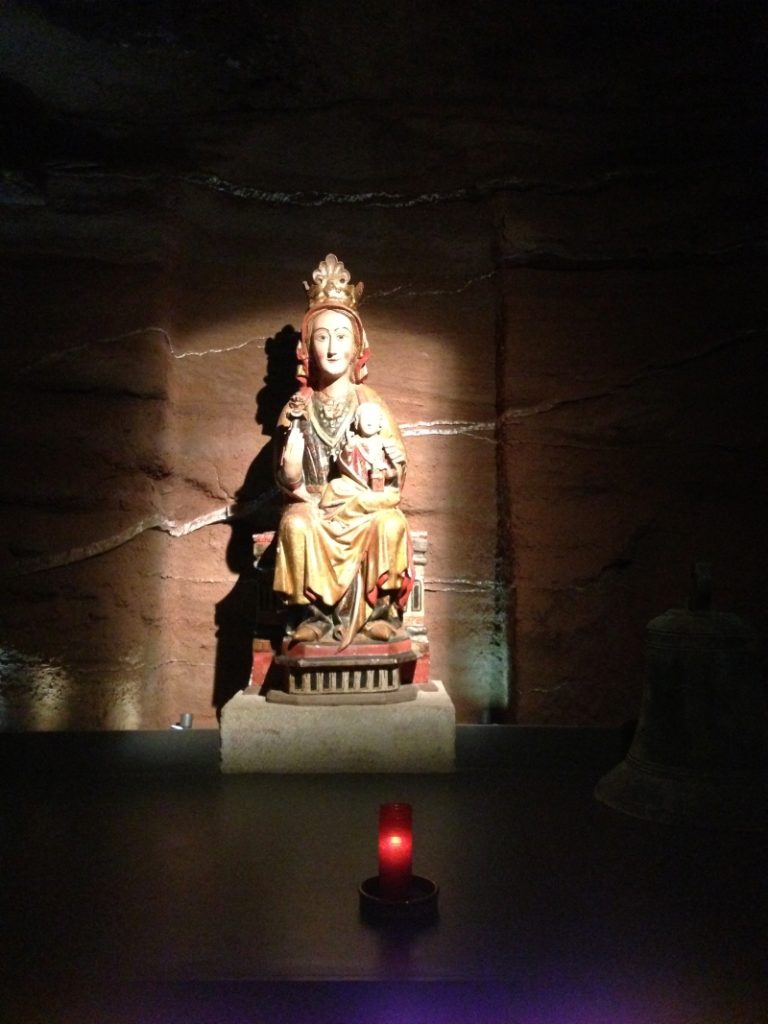
This is a raw passage from my novel-in-progress, which begins where my first novel, Lost and Found: A mystical journey on the Camino de Santiago, ends. (You can download it for free here.)
Setting: Three days have passed since Martha walked over Monte Irago and past La Cruz de Ferro after saying goodbye to Hope and her dad, the final scene in Lost and Found. Martha and two other pilgrims—Sophie, an American, and Kevin from Ireland—sit at the long table in the dining room of El Serbal y La Luna (The Rowan and the Moon), an albergue in the tiny town of Pieros. They’ve agreed to walk together the next day, free of stories and identities. All they know of each other is names and nationalities.
Salty language warning: Martha has become quite fond of the “f word.” She and her companions use it in this passage.
The other pilgrims have drifted away in noisy clumps, leaving only us three at the long table. The hospitalero has disappeared, evidently having fulfilled his duties for the night. The hospitalero’s wife is clearing what looks like a hundred dishes from the table. Two older American peregrinas, around my age, are helping, feeling sorry for her. We listen to the helpful peregrinas’ halting Spanish as they ask her for directions, and her attempts to convey her wishes. But dish-doing is a universal language, it seems, and soon the only sound coming from the kitchen is running water, clattering of plates, and soft rudimentary Spanish.
I feel guilty for a heartbeat, wondering why they’re in there working and I’m out here taking my ease. I take solace in the smallness of the kitchen and its current bustling fullness. There’s no room for me in there. And it’s not my job, so I choose gratitude and turn my attention to the job in front of me. This is my job—to be here now with these two people, as fully as I can be, without pretense or façade.
“Okay,” I say. “Let’s try this and see how long we last.”
“What do you want, right now, this minute?” I continue. “Are you comfortable? Do you want to find somewhere else to sit? Are you ready for bed?”
After a moment I answer my own question: “I’d like to go outside and sit under that serbal tree in the courtyard and look at the stars. And maybe catch a glimpse of la luna, as well. Would either of you care to join me? I’d love your company.”
We sit in silence outside for an hour, simply being in the dark. I notice that sitting in the dark is a lot easier when you have company.
The next morning we find each other in the dining room for café and toast. After breakfast we walk and talk on the way to Villafranca del Bierzo.
“I don’t know what’s next in my life,” I say. “I feel simultaneously excited and scared shitless about that. I’m in the wilderness between settlements, I guess.”
“How do you know … no, let me start over,” Kevin says. “What’s scary about the wilderness?”
“The wilderness requires a completely different skillset,” I reply. “The wilderness takes self-reliance. Trust in my own skills to survive and find my way. Trust in my environment to provide, and trust in my ability to recognize sustenance and direction when they show up.”
After a pause, I continue. “Living in a settled place with other people goes best when I follow the rules and stay in the grid. That’s what I’ve been doing for so long.”
A longer pause. “I thought the Camino would be safe. Instead, it blew me apart. I don’t know who I am anymore. I’m in this in-between place, between my old settled life and something I don’t even know what it is yet. And walking through this unknown place,” I continue haltingly, as I find the words, “is something I don’t know how to do. Because I’ve never learned it. No one’s ever taught me how to do this. Actually, they’ve taught me the exact opposite of how to do this. And I, in turn, have taught it to others. … Oh God. I’ve perpetuated the grid. Fuck fuck fuck fuck fuck.”
“Well, when we know better, we do better. Right?” says Sophie. “I’m with you, Martha.”
“What do we have to count on when we blow our lives apart?” I ask. “Where do we put our feet? Or do we just fall and fall and eventually learn how to live in this air, wind in our faces, that sinking feeling like an elevator drop in the pits of our stomachs, until that sensation becomes normal or at least typical and we’re no longer so freaked out by being blown up and away that we recover our centers and realize we’re okay? We’re just falling and it’s okay?”
“What if it’s flying instead of falling?” asks Kevin. “What if it’s not going to kill you eventually, and you can go back down to Earth anytime? What if up here you have perspective? What if up here you can see the lay of the land? What if … Oh! This just in: what if you’re not blown up at all? What if a mighty force has simply kicked you out of the nest? It’s been watching you—this big mama hawk watching you get too big for her nest, refusing to fly, expecting to be fed—and she’s finally seen her chance to get you into the air? The Camino was her opening and she took it! You’re not blown up, pieces falling to the ground. You’re flying, Martha. You’re fucking flying! And birds don’t carry any extra weight, do they? They can’t.”
He stops. “What do you think, Martha? Actually, no. How does that feel, Martha?”
“A lot better than thinking I’ve been blown up,” I say. “Flying is scary because it’s unfamiliar, but at heart I know how to do it. I was born to fly, not to stay in a nest. I have what I need, built in, to do this. I am what I need to do this.”
I stop in my tracks. “Oh my gosh. The only thing stopping me from flying is believing I can’t fly.”
Photo by Shreyas Malavalli on Unsplash


